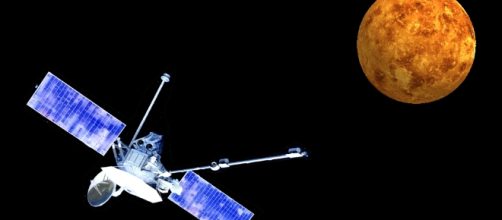Bepicolombo is a joint mission between the European Space Agency (ESA) and the Japanese Aerospace Agency (JAXA) projected to send two robotic spacecraft to Mercury. The mission comprises two orbiters that will map and study Mercury´s magnetosphere independently. This mission is planned to be launched in 2018 from ESA´s Kourou station in French Guiana. The journey will last for approximately 6.7 years and will arrive to Mercury in the fall of 2024.
The spacecraft
It involves two orbiters-one for interplanetary studies and the other for magnetosphere research.
The Mercury Planetary Orbiter (MPO) will map the surface and the internal contents at varied wavelengths. The mapping will reveal whether the core is solid or molten; in addition to the mineral and element components. The Mercury Magnetosphere Orbiter (MMO) will study the planet´s magnetic field and its origin.
Mercury´s exploration
To date, only two spacecraft have studied Mercury. From 1974-1975, NASA´s Mariner took the first images of Mercury´s surface. From 2008-2009, NASA´s Messenger approached Mercury during three flybys, taking images of most of the planet´s surface not imaged by Mariner. At that time, Messenger provided much of the information about the density, structure, magnetic field and atmosphere of Mercury.
Science objectives
The mission intends to gain a better understanding of the planet´s density, core structure, tectonic activity and the unseen hemisphere of the planet. It also aims to investigate the sulphur and water contents at the poles and the reasons why iron is not shown in spectroscopic observations from earth. It also intends to understand the mechanisms involved between the interaction of the magnetic field and the solar wind. Given Mercury is close to the sun, scientists also want to assess general relativity with enhanced precision.
Mercury
This is the closest planet to the sun and also the smallest in the solar system. Mercury doesn´t have an atmosphere and the temperature varies from 100 K (280 F°) to 700 K (800 F°).
The planet possesses a magnetic field; however, the structure of its core is not really known. Based on Mercury´s density (5.427 g/cm3 suggest that it may be composed of metallic elements, along with 30% of silicates.
Mercury, along with Venus, earth and the red planet-Mars(terrestrial planets) can give scientists a better understanding of how these planets have evolved over time. Its study will also broaden the understanding of how these types of rocky planets may have evolved in other planetary systems in the universe. The study of the inner planets greatly advances our knowledge in astronomy.
Other projects with ESA leadership include other astronomical targets, such as the gas giant Jupiter and the sun.

